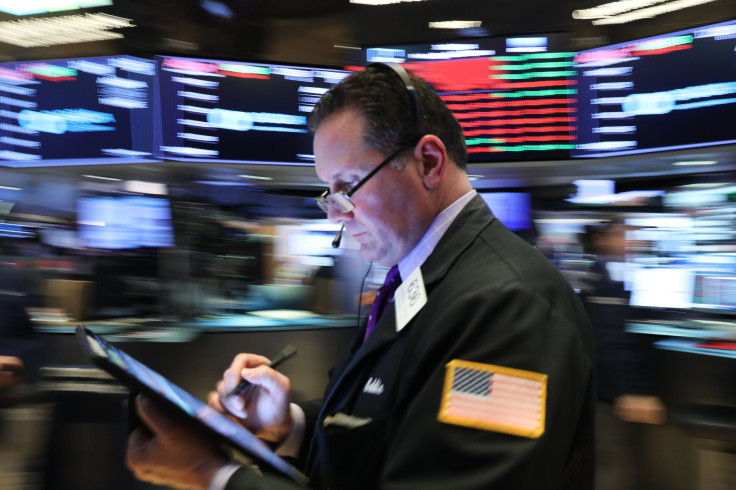Report Blames Banks, Hedge Funds For September Interest Rate Spike On Repo Market

In its latest quarterly report published on Sunday, the Bank for International Settlements blamed the cash crunch in the U.S. repurchase (repo) markets in September largely on big banks and hedge funds.
On Sept. 17, rates on general collateral repo surged temporarily to 10% from about 2%. That unexpected spike in interest rates caused disruption in repo markets. Now the Bank for International Settlements has linked that event to the fact that only four large banks dominate the repo business – that is, the lending of cash reserves into money markets in exchange for government-bond collateral. In addition, hedge funds are also increasing their involvement in repo markets – causing further disruption.
Barron’s reported strategists and regulators attributed much of the volatility in interest rates in September to an unusually “large settlement of Treasury securities and a tax-payment deadline tying up cash reserves in the U.S. financial system.” These acts temporarily lowered the amount of cash in the U.S. financial system.
But the Bank for International Settlements wrote that “none of these temporary factors can fully explain the exceptional jump in repo rates.”
Indeed, the Bank for International Settlements found deeper structural issues in the repo market were primarily to blame – specifically four large banks which have become net lenders of cash since the financial crisis -- in contrast to their status as net borrowers of cash prior to the crisis. Moreover, after the Federal Reserve reduced the size of its balance sheet, these four banks became even bigger cash lenders.
The four banks hold about 25% of the reserves in the U.S. banking system, but they hold 50% of the Treasuries.
The Bank for International Settlements noted in its report that volatility in the amount of cash that the U.S. Treasury keeps at the Fed also impacted the four banks’ reserves.
“Cash balances held by the U.S. Treasury in its Federal Reserve account grew in size and became more volatile, especially after 2015,” the Bank for International Settlements wrote. “The resulting drain and swings in reserves are likely to have reduced the cash buffers of the big four banks and their willingness to lend into the repo market.”
The Bank for International Settlements also indicated the most dramatic rate dislocation in September occurred in that part of the market where leveraged investors like hedge funds do their trading.
Thus, activities by hedge funds appear “to have compounded the strains,” the Bank for International Settlements added.
The Bank for International Settlements further noted the distribution of cash reserves and Treasuries in the financial system is now a “structural factor that could have amplified the repo rate reaction.”
“Not only did the spike in the repo rate come as a surprise to the New York Fed, but they also haven’t been able to normalize it as quickly as they thought they could,” chief economic adviser at Allianz Mohamed A. El-Erian told Bloomberg TV on Monday. “It hasn’t proved to be temporary. It hasn’t proved to be reversible without massive injections of liquidity. Which means that structural issues are playing a role.”
Bloomberg reported the repo market might face another test in mid-December when new Treasury debt will be issued in tandem with corporations’ quarterly tax payments.
Since the Sept. 17 disruption, the Fed has conducted daily market operations to guarantee that the system is functioning properly. Bank for International Settlements praised the Fed for having calmed markets.
Nonetheless, the Bank for International Settlements warned of possible future disruptions.
“Any sustained disruption in this market, with daily turnover in the U.S. market of about $1 trillion, could quickly ripple through the financial system. The freezing-up of repo markets in late 2008 was one of the most damaging aspects of the great financial crisis,” it said.
Meanwhile, an analyst at Credit Suisse warned the Fed may introduce another round of quantitative easing to deal with a gap in funding as banks struggle for precious reserves.
Zoltan Pozsar, Credit Suisse’s managing director for investment strategy and research, wrote in a note: “If we’re right about funding stresses, the Fed will be doing ‘QE4’ by year-end. Treasury yields can spike into year-end, and the Fed will have to shift from buying bills to buying what’s on sale – coupons.”
“QE4” denotes a fourth round of quantitative easing.
“The Fed’s liquidity operations have not been sufficient to relax the constraints banks will face in the upcoming year-end turn,” Poszar added.
While noting that “repo rates have been trading normally since the September blowout,” Poszar warned that another surge in rates would upset the carry trades that financial institutions use, such as when lower-yielding currencies are used to buy those with higher yields.
“If carry makes the world go ’round, and reserves make carry possible. the day we run out of reserves would be the day when the world would stop spinning.” Pozsar said. “No, this is not an overstatement.”
Based in Basel, Switzerland, Bank for International Settlements is an international financial institution owned by central banks
© Copyright IBTimes 2025. All rights reserved.





















